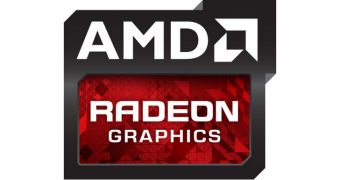Soon, Advanced Micro Devices will hold a product launch event where it will introduce its new collection of graphics processors. What we have just found out is how the product will compare to NVIDIA's.
It all came to light in an interview that Forbes managed to rope AMD's representative Matt Skynner into.
Hawaii is going to be the high-end GPU used in the Radeon R9 line, the one that will be a level above the cards that HIS has just exposed.
Skynner was predictably evasive in his answers, since the info is being withheld until the press release that will probably happen next month, maybe around the same time as Microsoft's release of Windows 8.1 (October 17).
One thing he did, however, say was that NVIDIA's GK110 Kepler flagship chip was nearly 30% bigger, physically, than Hawaii.
Thus, the AMD processor would “have the best performance for the die size for the enthusiast GPU.”
Sadly, without the manufacturing process node going from 28nm to 20nm, the raw performance might not actually exceed NVIDIA's.
Then again, Skynner said that 28nm allowed for “higher clock speeds and higher absolute performance.”
Things might have been different if AMD had the time to build a new GPU architecture, but with things going steady instead of fast, it might actually be a good thing that the leap to 20nm is being postponed.
Other than the physical comparison to NVIDIA's GPU, Skynner didn't reveal much, although he did admit that AMD was thinking of making a similar software to NVIDIA's Geforce Experience, which automatically tweaks PC games for the best performance-visual quality balance.
As for APUs with 1080p gaming support, Skynner again didn't confirm anything outright, but he did say that the Radeon graphics in APUs could connect to some discrete cards. And, obviously, on-chip graphics will only improve as time passes.

 14 DAY TRIAL //
14 DAY TRIAL //